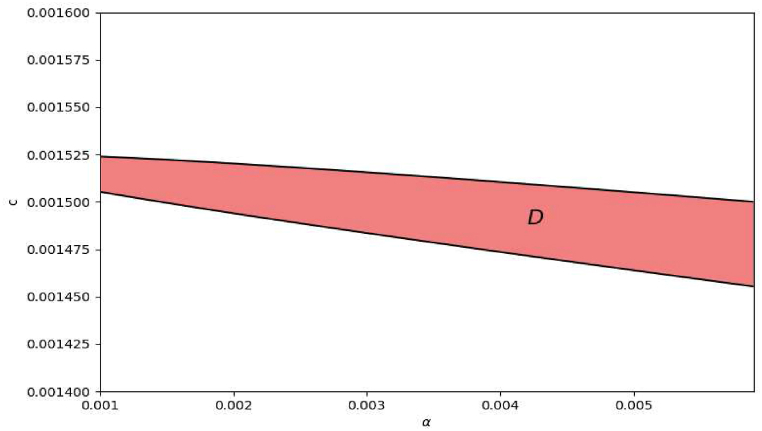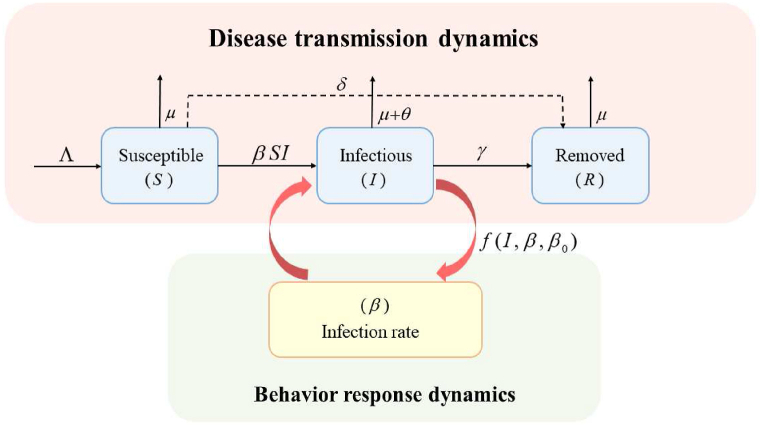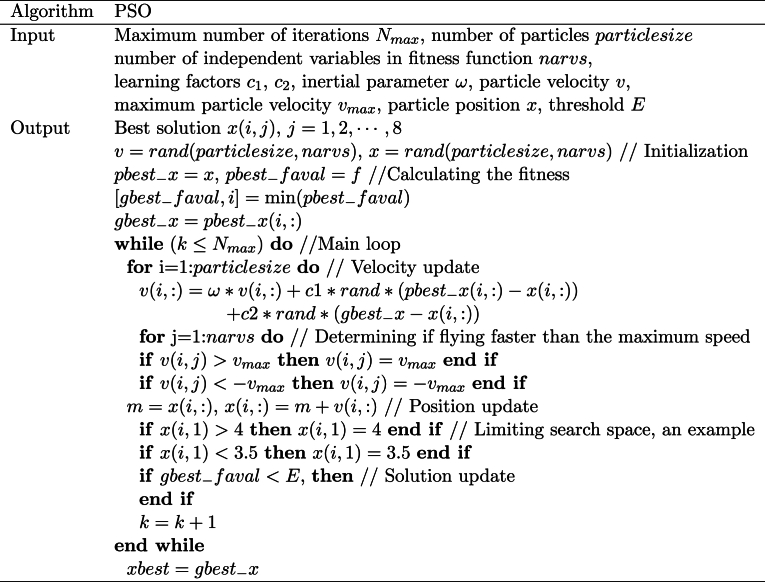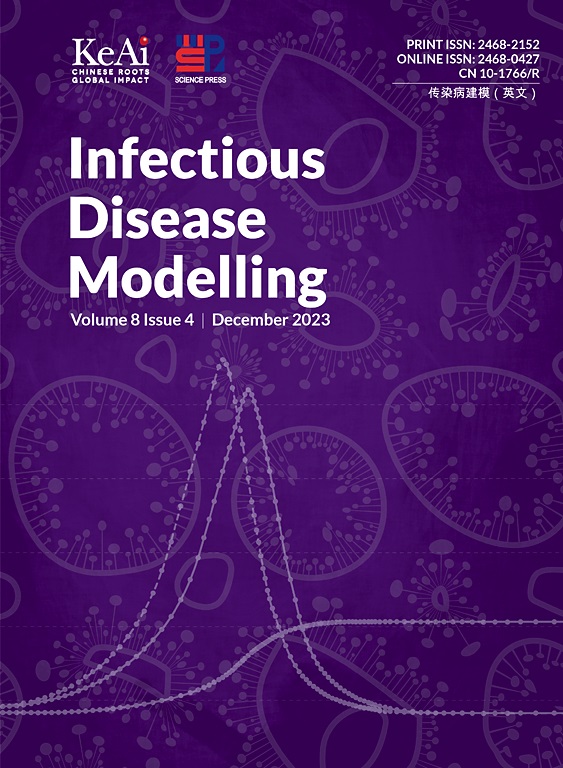A modelling approach to characterise the interaction between behavioral response and epidemics: A study based on COVID-19
IF 2.5
3区 医学
Q1 Medicine
引用次数: 0
Abstract
During epidemic outbreaks, human behavior is highly influential on the disease transmission and hence affects the course, duration and outcome of the epidemics. In order to examine the feedback effect between the dynamics of the behavioral response and disease outbreak, a simple SIR-β type model is established by introducing the independent variable β of effective contact rate, characterizing how human behavior interacts with disease transmission dynamics and allowing for the feedback changing over time along the progress of epidemic and population's perception of risk. By a particle swarm optimization algorithm in the solution procedures and time series of COVID-19 data with different shapes of infection peaks, we show that the proposed model, together with such behavioral change mechanism, is capable of capturing the trend of the selected data and can give rise to oscillatory prevalence of different magnitude over time, revealing how different levels of behavioral response affect the waves of infection as well as the evolution of the disease.



描述行为反应与流行病之间相互作用的建模方法:基于COVID-19的研究。
在疫情暴发期间,人类行为对疾病传播具有重要影响,从而影响疫情的进程、持续时间和结果。为了研究行为反应动力学与疾病暴发之间的反馈效应,通过引入有效接触率自变量β,建立了一个简单的SIR-β型模型,表征了人类行为与疾病传播动力学的相互作用,并允许反馈随时间的变化,随着疫情的进展和人群的风险感知。通过对具有不同形状感染峰的COVID-19数据的求解过程和时间序列的粒子群优化算法,我们证明了所提出的模型以及这种行为改变机制能够捕获所选数据的趋势,并且可以随着时间的推移产生不同幅度的振荡流行,揭示了不同水平的行为反应如何影响感染波以及疾病的演变。
本文章由计算机程序翻译,如有差异,请以英文原文为准。
求助全文
约1分钟内获得全文
求助全文
来源期刊

Infectious Disease Modelling
Mathematics-Applied Mathematics
CiteScore
17.00
自引率
3.40%
发文量
73
审稿时长
17 weeks
期刊介绍:
Infectious Disease Modelling is an open access journal that undergoes peer-review. Its main objective is to facilitate research that combines mathematical modelling, retrieval and analysis of infection disease data, and public health decision support. The journal actively encourages original research that improves this interface, as well as review articles that highlight innovative methodologies relevant to data collection, informatics, and policy making in the field of public health.
 求助内容:
求助内容: 应助结果提醒方式:
应助结果提醒方式:


